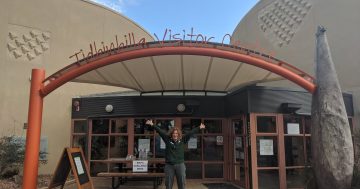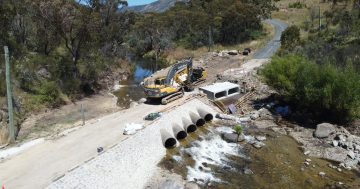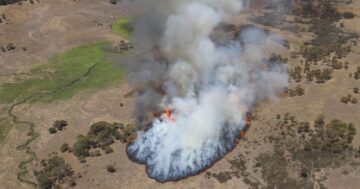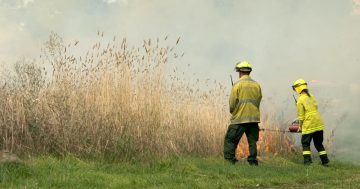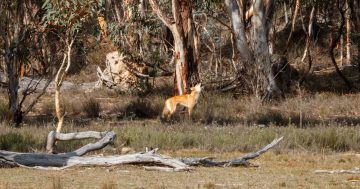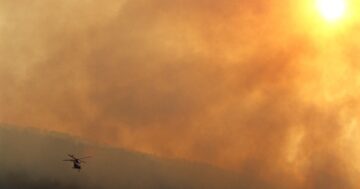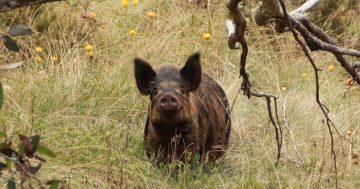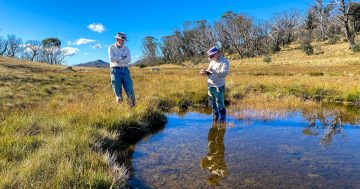
A blackened tree stump in the Namadgi National Park remains a reminder of the Orroral Valley fire. Photos: ACT Parks and Conservation.
Blackened tree trunks are stark reminders of the devastation of the Orroral Valley fire, 12 months after it destroyed more than 80 per cent of the Namadgi National Park.
As images were made public this week of the very first flames of the fire by Defence, Namadgi is still suffering although it’s showing signs of stoic recovery in the face of predictions that some parts of the Park will never be the same.
The now and then images below could not be more contrasting.
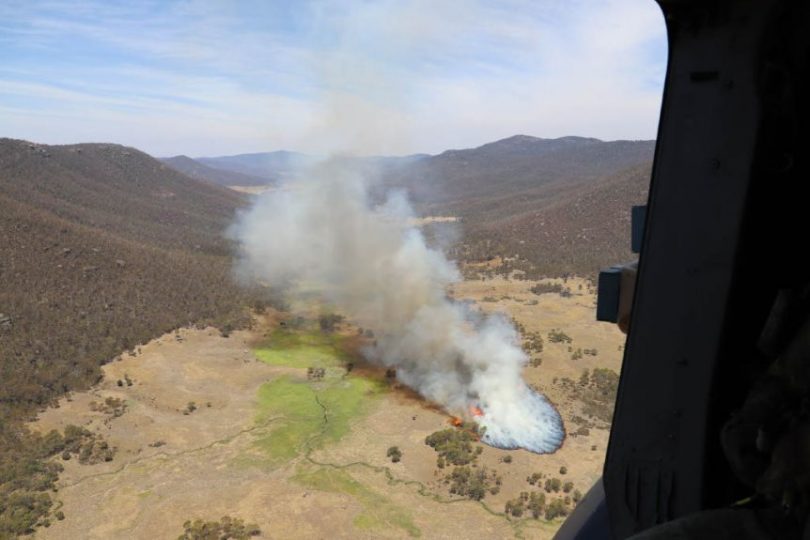
The start of the Orroral Valley fire from the helicopter which accidentally started the blaze. Photo: Department of Defence via ABC.
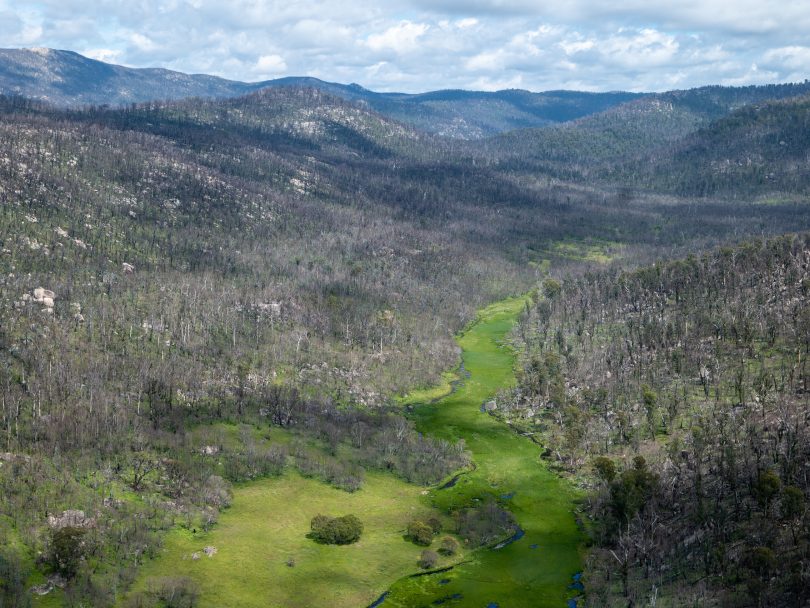
The Orroral Valley, almost 12 months on from the devastating bushfire.
Region Media sat with the Minister for Planning and Land Management, Mick Gentleman, for some perspective on the recovery process and what is still left to do.
Beyond the Mr Gentleman’s statements focusing on the Park’s natural regeneration and making it safe for the public when it completely reopens, he said excellent progress is being made on the long-term recovery plan.
“We’re moving faster than we originally anticipated and I’m optimistic that more areas will be able to open sooner than expected,” Mr Gentleman said.
“Approximately 70 km of Namadgi’s walking trails and recreation areas were impacted by the fires and subsequent storms, along with significant damage to the road and fire trail network.”
The ACT Government has committed $1.07 million to the recovery of walking trails so they can reopen to the public, while also working to make visitor’s areas safe for staff, contractors, volunteers and the general public.
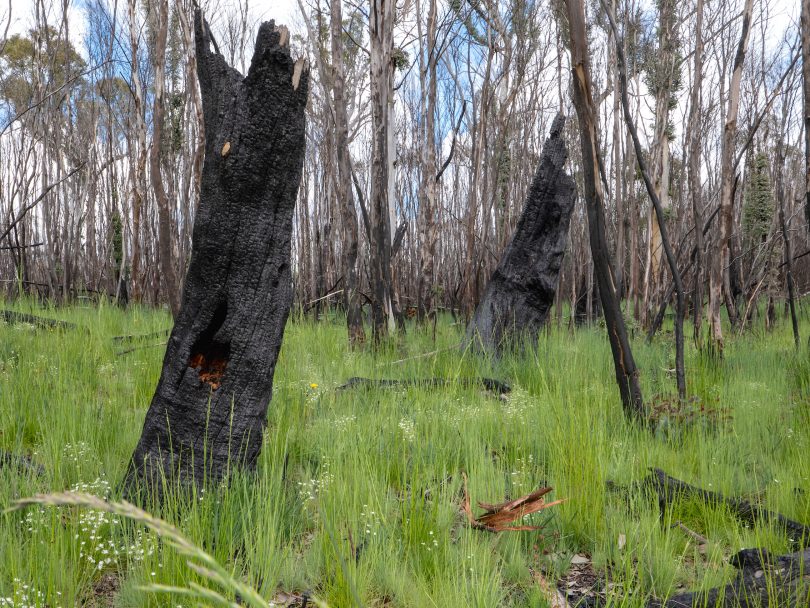
Burnt stumps and green grasslands at Namadgi National Park one year on from the Orroral Valley fire.
Burnt stumps provide habitat for returning wildlife, while animals such as rabbits, pigs, deer and feral horses represent a significant threat to native species.
Most trees survived the fire and are resprouting, the exception is the Alpine Ash, which is killed by fire and only regenerates from seed.
Most Snowgums and other eucalyptus species survived the fire and are resprouting from their bases.
However, Mr Gentleman said we still don’t know how long it will take for Namadgi to recover fully.
“The rate of recovery depends on fire intensity, plant species, nutrient and moisture availability,” he said.
“Areas where the fire intensity was severe and tree canopy burnt are recovering more slowly than areas where only the lower and mid-storey species burnt. We are also seeing that ridgetops and drier north/west aspects are recovering more slowly than gullies and wetter south/east aspects.”
He said what can’t be questioned are the efforts of ACT Parks and Conservation Service staff and volunteer groups like Landcare ACT who have played a significant part in the process.
Rangers are also actively managing invasive plants and feral animals, concentrating on vulnerable areas including grasslands, riverbanks, and bogs and fens.
“We are focusing efforts on managing threats from invasive animals and plants to the natural regeneration of the park,” Mr Gentleman said.
“Impacts of feral animals include digging, trampling, wallowing, browsing and track formation, as well as impacts on water quality through damage to sensitive ecosystems.
“We are also actively monitoring the presence of invasive animals such as deer and pigs and monitoring the recovery of fish and other aquatic organisms after post-fire sediment flowed into rivers and streams.”
However, the burnt areas of Namadgi are loud with birdsong, though some bird species are still a little shy.
Summer migrant birds such as Yellow-faced Honeyeaters and Rufous Whistlers have returned to the park in good numbers and are making the most of the bountiful spring conditions.
In many ways, the birds are a legacy to the unknown number of animals that perished in the bushfire as a marker to the ongoing process of recovery.












